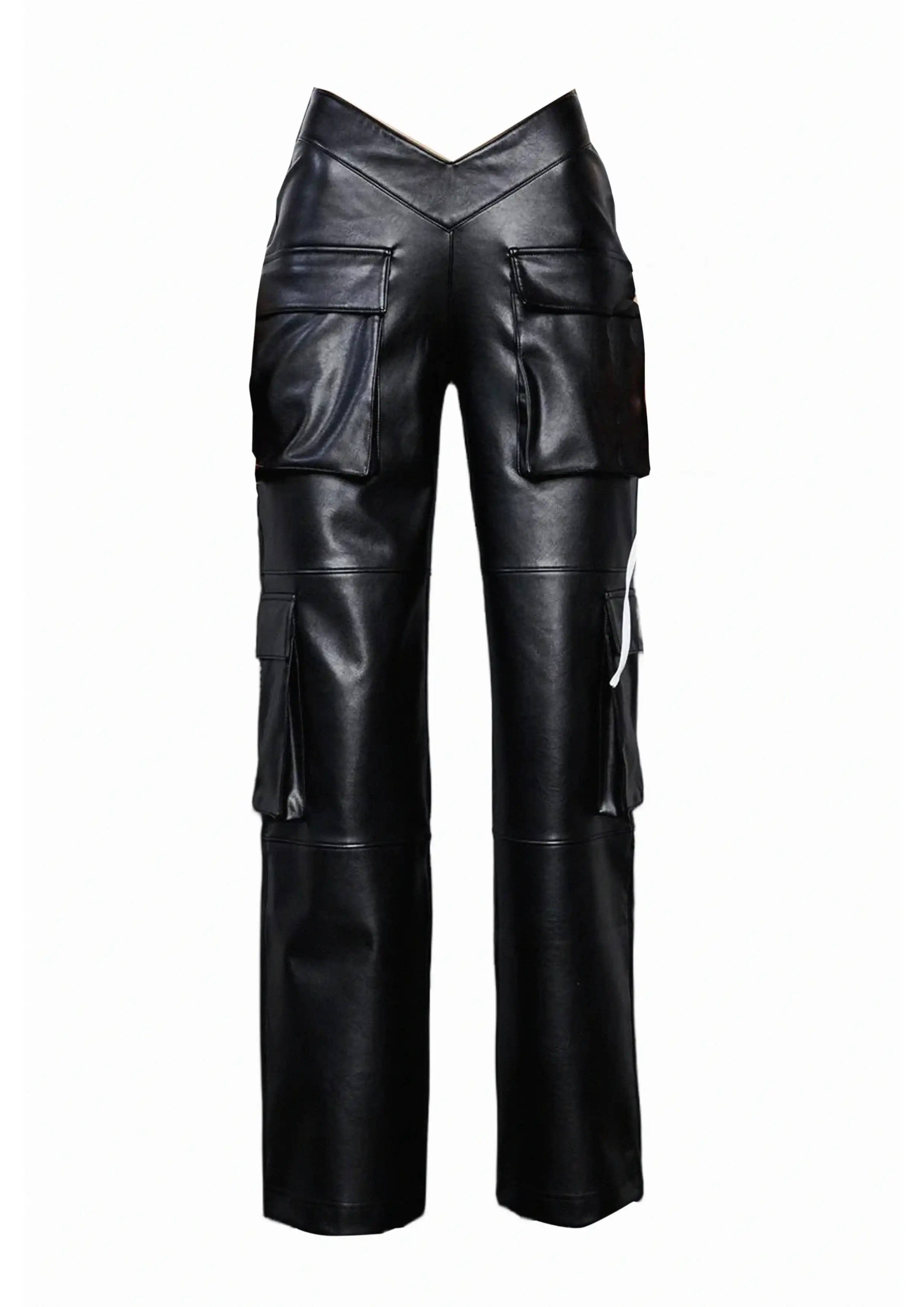As fashion trends continue to evolve, artificial leather pants have won the favor of many consumers with their unique charm and practicality. Not only do these pants have a leather-like look and feel, but they also have significant advantages in price, durability and environmental protection. So, how are faux leather pants made? What are the characteristics of the materials of faux leather pants? This article will explore.
Before discussing the materials used to make artificial leather pants, it is necessary to understand the historical background and development of artificial leather. Artificial leather first appeared in the 20th century, with the goal of imitating the texture and performance of real leather while reducing costs. Early artificial leather was mainly made of plastic, but over time, advances in science and technology have made the materials and production processes of artificial leather increasingly complex and sophisticated.
Faux leather pants, as the name suggests, are pants made from non-natural leather materials. These materials are typically synthetic polymers such as polyurethane (PU) or polyvinyl chloride (PVC), which can be processed into a leather-like texture and appearance through a variety of processing techniques. The process of making faux leather pants involves multiple steps, including material selection, design, cutting, sewing, finished product processing, etc.

Next, let's analyze in detail the main material of artificial leather pants-synthetic leather. Synthetic leather is a polymer material that imitates the structure and properties of genuine leather, but is cheaper and has a more environmentally friendly production process. There are various types of synthetic leather, the two most common of which are polyurethane synthetic leather (PU synthetic leather) and polyvinyl chloride synthetic leather (PVC synthetic leather).
Polyurethane synthetic leather (PU synthetic leather) is a synthetic material with polyurethane as the main component. Its production process usually includes the following steps: First, dissolve polyurethane in a specific solvent to form a uniform solution; then, apply the solution on a base cloth. Commonly used base cloths include cotton cloth and polyester fiber cloth. etc.; then, through the drying and curing process, the polyurethane is formed into a thin film on the base fabric; finally, through post-processing processes such as embossing and dyeing, the product is given the desired appearance and performance.
Polyvinyl chloride synthetic leather (PVC synthetic leather) uses polyvinyl chloride as the main raw material. Its production process is similar to PU synthetic leather, but it is different in formula and post-processing process. The cost of PVC synthetic leather is relatively low, but its breathability and softness are generally not as good as PU synthetic leather.
In addition to synthetic leather, the production of artificial leather pants also involves other auxiliary materials, such as wires, zippers, buttons, etc. Although these materials are not used in large quantities, they are also crucial to the quality and service life of the overall product. For example, high-quality wire ensures the firmness of the stitched parts, while high-quality metal zippers provide a smooth use experience.
In the design and production process of faux leather pants, the selection of materials is a complex decision-making process. Designers need to choose appropriate materials based on product positioning, consumer preferences, and cost budgets. At the same time, the environmental performance and sustainability of the materials also need to be taken into consideration. As environmental awareness increases, more and more manufacturers are looking to recyclable or biodegradable materials to replace traditional synthetic leather.
Additionally, the production of faux leather pants involves precise cutting and sewing techniques. Cutting is the process of cutting selected materials into required shapes according to design drawings. This step requires extremely high precision to ensure that the size and shape of the finished product meet the design requirements. Sewing is the process of stitching cut parts together to form the final product. This step requires not only exquisite manual skills, but also professional sewing equipment.
In short, the production of faux leather pants is a process involving a variety of materials and complex processes. From the selection of synthetic leather to the application of auxiliary materials, to cutting, sewing and finished product processing, every link has a direct impact on the quality of the final product. With the advancement of science and technology and the diversification of consumer needs, the materials and technologies for making artificial leather pants are constantly innovating and developing to meet the needs of the market. In the future, we have reason to believe that artificial leather pants will continue to occupy a place in the clothing market with a more environmentally friendly, comfortable and fashionable attitude.
How to choose high-quality faux leather pants manufacturer
Professional faux leather pants company: What are our advantages?
Faux leather pants color and style selection guide
Explore the international markets and exports of faux leather pant
Fashion guide: how to buy high-quality faux leather pant
The environmental benefits of faux leather pant: the future of sustainable fashion
Plus size faux leather pants: the perfect balance of comfort and style
Will faux leather pant shrink?
Explore the comfort and warmth of faux leather pant
Faux leather pant size selection guide
An in-depth analysis of the production process of faux leather pant
The waterproof performance and anti-wrinkle performance of faux leather pant
How to choose the right plus size faux leather pants for you
Analysis of market demand for plus size faux leather pants
How to identify the material of high-quality faux leather pants
Are faux leather pants breathable?
Do faux leather pants smell bad?
Are faux leather pants suitable for hot weather?
mia
jacky.wang@yx-fashion.com

More Stories
The Ultimate Guide to Casual Flats for Women: Style, Comfort, and Everyday Versatility from Bluesky Footwear Group
Twist Speed Lock Trekking Pole: The Complete Guide to Stability, Performance, and Innovation by Yongbo
10 Creative Ways to Use Printed Flocking Fabric in Home Decor & Fashion